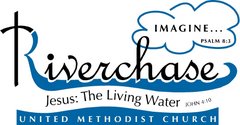A sermon preached by Dr. Thomas Lane Butts, Minister Emeritus at First United Methodist Church in Monroeville, Alabama on July 26, 2009.
Scripture: Matthew 8:1-4
Introduction, Explanation of Scripture, and Summary Statement
In the ancient world into which Jesus was born, the most dreaded of all diseases was leprosy. It was to that day and age somewhat like aids is regarded today. It was dreaded more than death itself. Leprosy not only had severe physical consequences, it also had social and economic consequences. The worst thing about leprosy was that the leper became an absolute and a complete outcast. They banded together and foraged the countryside for sustenance; and they clung to one another for some semblance of meaningful human relationships. They were required to wear distinctive clothing so they could be easily identified; and when they approached a town, they were required by law to put their hand (or a cloth) over their mouth and cry out the warning: "Unclean -- Unclean."
Even as late as the Middle Ages, when leprosy was diagnosed, the priest would don his stole and crucifix, bring the leper into the church, and there, read the burial service over the leper. . A leper was considered as good as dead, and lived out the eight or nine years that it took the disease to run its course in lonely isolation and complete segregation. No one dared come near a leper for fear of contracting the horrible disease; and a leper dared not come near others on pain of the penalty of the law.
The three Synoptic Gospels each tell an identical story about the healing of a leper in the early part of Jesus' ministry. Listen to the account from the Gospel of St. Matthew. For some reason not known to us, the leper ignored the ancient law that forbade him to approach a well person unannounced. He threw himself at Jesus' feet and said: "Lord, I know that you can heal me if you want to." And Jesus stretched out His hand and touched the man and said: "I so will; be well again." And the man's leprosy was healed immediately.
Jesus then gave the man two directives, the first of which was that he should say nothing to anyone about what had happened. The second directive was that the man should go and show himself to the priest, have the cure certified, and then make the offering commanded by Moses. The Jewish nation was not a democracy, but a theocracy, where matters of church and state were one. The priest had duties that we would consider civil duties. He was the local health officer. It was the priest who diagnosed and declared a person to be a leper, and only the priest could certify a cure and restore the leper to friends and family. Jesus could heal , but only the priest could certify the cure.
I cannot resist the temptation to point out the implications of this second directive. For several years now we have been passing through an era of anti-institutionalism. There are those iconoclasts who think we would have better education without schools; better families without marriage; more justice without courts and a purer faith without the institutional church. And, often this anti-institutionalism has been promoted in the good name of Jesus and on the authority of the Bible. The iconoclast forgets not only the lessons of history, but also the facts of the faith. While it is true that the institutional church tried to destroy Jesus, Jesus never tried to destroy the church. How often, as here upon this occasion, Jesus pointed people back to the institutional framework of the church. Jesus could heal him, but the man needed more than relief from the burden of leprosy. He needed the saving, and nurturing fellowship of the congregation. He needed the familiar forms -- the tangible framework of the faith that could give him strength for other storms of life that were to come. How often we have seen the lines by which we learn from the past -- our roots -- broken by thoughtless persons who think because faith is intangible that it needs no visible expression -- no organized framework of support. Those who break the idols, destroy the institutions, demythologize and explain the mysteries, do no service to faith. Faith is not strengthened by destroying the vessels in which it is received. You can't get a drink of water in a rainstorm. Water must be organized in order to be useable. The institutional church, our myths and our mysteries, are vessels in which we organize and serve the water of life. "Go show yourself to the priest, offer the gift that Moses commanded, get a certificate of your cure." Go back to church.
To the first generation church the essence of the story was the miracle of the healing of an incurable disease. It was told and retold, and finally recorded to further document the divine nature of Jesus as the authentic Son of God -- to wit, he could cure an incurable disease. I do not wish to minimize the miraculous nature of this event. It is obvious; but as important and miraculous in the episode as the healing of the leper is the touching of the leper. He reached out his hand and touched him. Defying all tradition and training; defying all known laws of sanitation, contagion and propriety; Jesus physically touched the man.


No comments:
Post a Comment